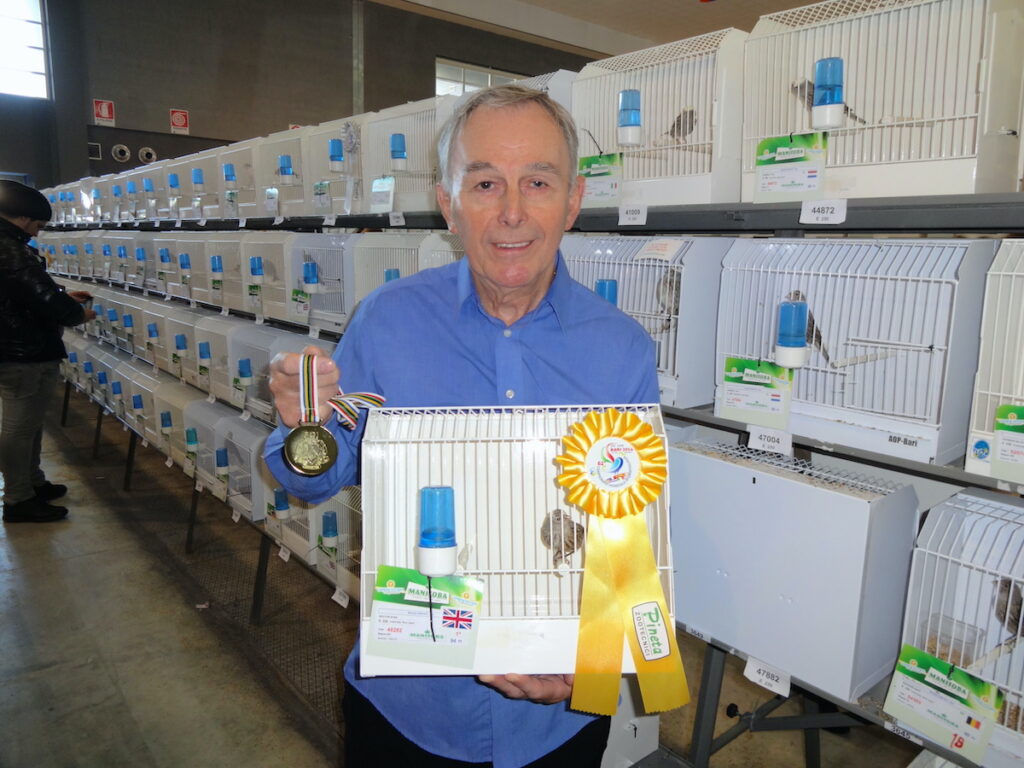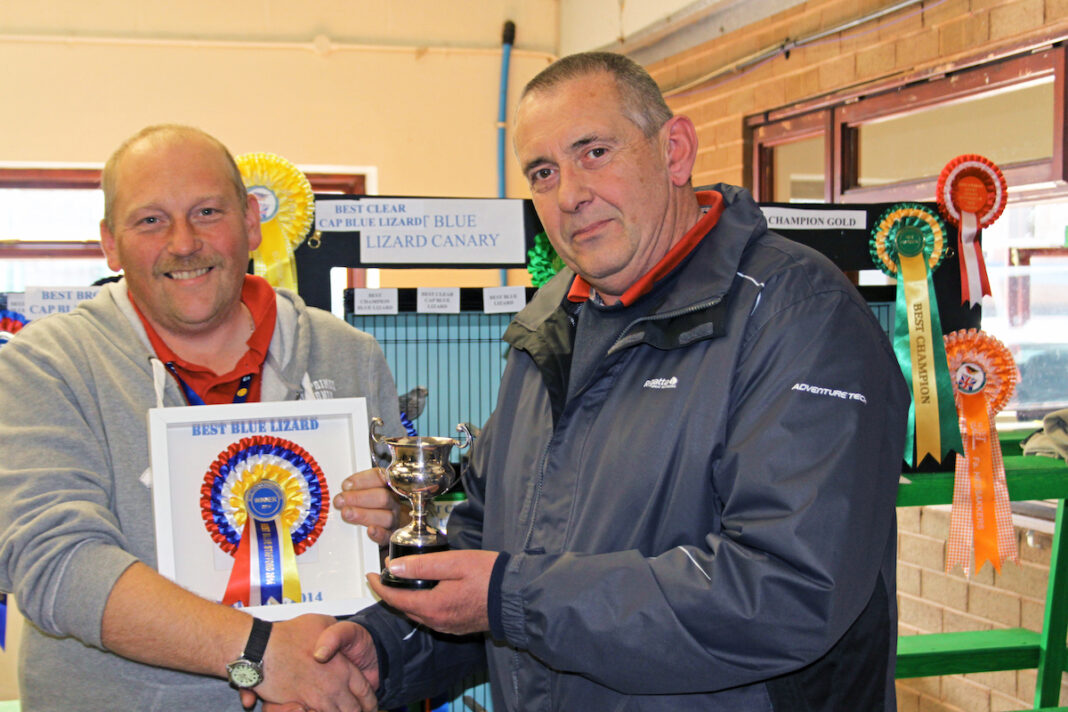Having begun the journey with blue Lizards on his own, DAVID ALLEN has been joined by more and more fanciers over three decades – and the birds still continue to improve
DURING the Christmas break I was reflecting on my time with Lizards. Then it was that I realised that in 2024 it will be 30 years since I began my blue Lizard programme. I still take a great deal of pleasure in breeding and showing my blue Lizards, and I still have loads of ideas and plans about how I’d like to work them. For sure, there have been ups and downs, but that is what birdkeeping is all about.
It was back in 1993 that it was all sparked off when I saw a blue Lizard at the National at the NEC. I loved the look of that bird. It was a Lizard with a white ground colour. (I have always had a soft spot for white canaries.) Then the following year I started a plan to breed my own blue Lizards.
While reflecting on this, I also reviewed what has been achieved in those past 30 years. The first achievement was to breed my first blue Lizard, albeit not a bird as we see them today.
Then in 1995 I bred a few more, which were more akin to a Lizard. Then when I showed them at the National it sparked a great deal of both interest and uproar. This gave rise to the late Roy Stringer writing an article in this paper which was headlined “Blue Lizards: not everyone’s cup of tea”.
The next big development with my blue Lizards was to exhibit them at the World Show. COM had just added classes for blue Lizards in their classification. I should explain that blue Lizards were more common in Europe, but I was the first person from the UK to stage blues at a World Show. In fact, I was also among the first UK breeders to show traditional Lizards at a World Show. That was in 2008, after encouragement from my late good friend Brian Hogg.
From then on more people joined me in breeding blue Lizards including Kevin Skinner. It was Kevin who kick off the next milestone in the journey: the formation of the Blue Lizard Canary Club of Great Britain in 2011, that is 13 years ago now as well.
More people began to keep and breed the birds, so that in 2014 the club had its own section at the National at Stafford. From there the club introduced zone shows, for which we received a kind donation of trophies.
These were named after certain founder figures with the breed: the David Allen Founders trophy (awarded at the Southern Zone show), the Kevin Skinner Trophy (awarded at the National) and the Andy Williamson Trophy (at the Eastern Zone show).
In 2014 the club also introduced its own closed-ring scheme, and in that year and again in 2015 a UK breeder of blues, Stan Bolton (below), won medals at the World Show.

Then in 2016 the club held its first standalone show for blue Lizards. The committee decided to purchase small tubular drinkers and provide them free for exhibitors at shows.
On a personal note, the biggest highlight for me was writing and publishing of my book The Blue Lizard Canary, which described how I developed my stud as well as explaining other points about the breed.
In these past 30 years, the quality of blue Lizards in the UK has improved greatly with the hard work of breeders. I would like to thank everybody who has helped over that time. But there is still a long way to go. The story and the journey both continue.
David Allen is secretary of the Blue Lizard CC and an LCA panel judge.
Find more news and articles like this on the Cage & Aviary Birds website. Subscribe to Cage & Aviary Birds magazine now.


